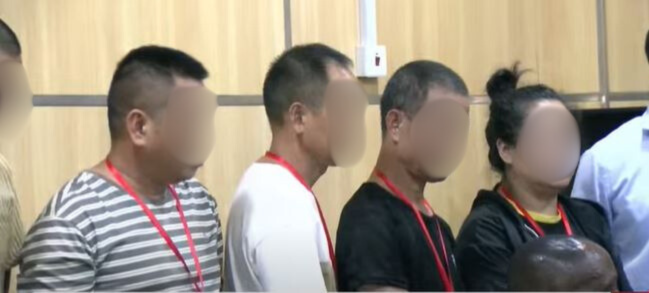Asikoye v Republic (Criminal Appeal E007 of 2025) [2025] KEHC 9359 (KLR) (30 June 2025) (Judgment)
1.The appellant was charged with the offence of attempted defilement contrary to section 9(1) as read with section 9(2) of the Sexual Offences Act, No. 3 of 2006. In the alternative, he was charged with the offence of committing an indecent act with a child contrary to section 11(1) of the same Act. After a full trial, he was convicted and sentenced to serve ten (10) years imprisonment on the main charge.
2.Aggrieved, he filed a petition of appeal challenging his conviction and sentence. He challenged the totality of the prosecution’s evidence against which he was convicted. He complained that the trial court failed to consider his defence. He urged the court to quash his conviction and set aside the sentence imposed.
3.As this is a first appeal, I am required to re-evaluate the evidence tendered in the trial Court and come to an independent conclusion as to whether or not to uphold the convictions and sentences. This task must have regard to the fact that I never saw or heard the witnesses testify (see Okeno v Republic [1973] EA 32).
4.The prosecution called six (6) witnesses in support of their case.PW1, S.M., a 15 year old student born on 23rd July 2009, testified under oath after voir dire. On 11th August 2024, at 10:30 am, while heading to church via a different route, she met the appellant, Davy, who lured her to his house, locked the door, and professed love for her. Despite her protests about being late, he touched her, pushed her onto a bed, and demanded she lift her dress, which she refused. He rubbed his penis against her underwear without penetration and gave her Kshs. 200, and warned her to stay silent. She reported the incident to her mother, PW2, at church, handing over the money while crying.
5.PW2, the complainant’s mother, corroborated PW1’s account. She was at church when PW1, visibly distressed, disclosed the sexual assault, claiming rape. They visited the appellant’s house but found him absent. The appellant later called PW2, admitting a mistake and blaming “the devil.” He was found at the church seeking prayer and was arrested.
6.PW3, the complainant’s father, supported the testimonies of PW1 and PW2. He reported the incident to the police and accompanied PW1 to Nairobi Women’s Hospital for examination and treatment.
7.PW4, John Njuguna, a clinician at Nairobi Women’s Hospital, testified that PW1 reported defilement. Examination revealed no physical injuries or torn clothing, but her hymen showed old healed wounds. She tested negative for infections and pregnancy.
8.PW5, PC Douglas Ombati, the investigating officer, recorded PW1’s statement, visited the scene, arrested the appellant, and charged him.
9.The trial court found a prima facie case established under Section 211 of the Criminal Procedure Code, placing the appellant on his defence. The appellant, David Anjichi, denied the charges, claiming he was buying Colgate and briefly spoke with a girl near a shop. He alleged a dispute over a Kshs. 10,000 debt to PW2’s shop caused the accusation. He was arrested at the church after being summoned.
10.I have considered the evidence before the trial court, the grounds of appeal and the rival submissions. The issue for my determination is whether the Prosecution proved the offence of attempted defilement to the required legal standard.
11.The offence of attempted defilement is premised under section 9 of the Sexual Offences Act as follows: -9.Attempted defilement(1)A person who attempts to commit an act which would cause penetration with a child is guilty of an offence termed attempted defilement.(2)A person who commits an offence of attempted defilement with a child is liable upon conviction to imprisonment for a term of not less than ten years.(3)The provisions of section 8(5), (6), (7), and (8) shall apply mutatis mutandis to this section.
12.The term attempt is defined by section 388 of the Penal Code as follows: 1. When a person, intending to commit an offence, begins to put his Intention into execution by means adapted to its fulfilment, and manifests his intention by some overt act, but does not fulfil his intention to such an extent as to commit the offence, he is deemed to attempt to commit the offence.
2.It is immaterial, except so far as regards punishment, whether the offender does all that is necessary on his part for completing the commission of the offence, or whether the complete fulfilment of his intention is prevented by circumstances independent of his will, or whether he desists of his own motion from the further prosecution of his intention.
3.It is immaterial that by reason of circumstances not known to the offender it is impossible in fact to commit the offence.”
13.The ingredients of the offence of attempted defilement were outlined by Kemei J. in the case of Benson Musumbi v Republic [2019] eKLR as follows: - “ The prosecution in an offence of attempted defilement must prove the other ingredients of the offence of defilement except penetration; it must prove the age of the complainant, identification of the assailant, and then prove steps taken by the assailant to execute the defilement which did not succeed. Attempted defilement is as if it were a failed defilement, because there was no penetration.”
14.From the definition above, it follows for a charge of attempted defilement to stand, the Prosecution must prove beyond reasonable the age of the complainant; that the overt act (attempted penetration) was committed; and the identification of the assailant.
15.On the age of the complainant, the prosecution adduced the evidence of a birth certificate and the testimonies of the victim to prove her age. PW1 testified that she was 15 years old and was born on 23rd July 2009. Her certificate of birth (P.Exh4) was produced. I find that this ingredient has been proven beyond reasonable doubt.
16.On identification of the perpetrator, PW1 gave clear and graphic testimony of the ordeal. PW1 remained steadfast that it was the appellant who placed his penis on her vagina. The victim maintained that she knew the appellant as Davy and the identification was by recognition. It is my view that being well known to the victim, it would have been impossible for the Appellant to be mistakenly identified if he was the one who committed the alleged offence. I therefore hold that the Appellant is the one who committed the act alleged.
17.On the Proof that the overt act was committed, Penetration is defined under section 2 of the Sexual Offences Act as follows: "Penetration" means the partial or complete insertion of the genital organs of a person into the genital organs of another person.”
18.It follows then that in a case of attempted defilement, the Prosecution must demonstrate that an accused person took all the necessary steps to begin an act of penetration but was unable to complete the same either at his own volition or through the intervention of another.
19.There must be no penetration but only evidence of its attempt as held by Makau J in David Aketch Ochieng v R, [2015] eKLR as follows:“For a successful prosecution of an offence of an attempted defilement, the prosecution must adduce sufficient evidence to the required standard to prove an attempted penetration. This may in my view include bruises, or lacerations from complainant’s vagina, and/or bruises or lacerations of culprit’s genital organ and finding made discharge such as semen or spermatozoa outside the complainant’s vagina or innerwear without there being penetration.”
20.In this case, the Prosecution called on the evidence of the minor and produced the medical examination report to prove attempted penetration. The minor testified that appellant pulled his clothes down and pushed his penis on her pant. He however did not insert it in her vagina. He continued rubbing his penis on her and she eventually managed to stand up and went out. The medical officer PW4 confirmed that no penetration had occurred since upon genital examination, PW1 had no injuries but her hymen had old healed wounds. She also tested negative for infections and pregnancy.
21.Based on the evidence adduced, I therefore hold that the prosecution proved steps taken by the assailant to execute the defilement which however did not succeed.
22.In his defence, the appellant maintained his innocence denying the charges against him. The trial court considered the defence and found it to be baseless. In addition, PW1 had no reason to falsely accuse the appellant of attempted defilement. I have already found above that her testimony was truthful and consistent all through. When weighed against the prosecution case, the appellant’s defence did not raise any doubts thereof and it was rightly dismissed by the trial court. I therefore find that elements of the offence of attempted defilement were proved beyond reasonable doubt.
23.The trial court’s finding of guilt was based on sound evidence, and the conviction was proper and is upheld.
24.On sentencing section 9 of the Sexual Offences Act as follows: (2) A person who commits an offence of attempted defilement with a child is liable upon conviction to imprisonment for a term of not less than ten years. The appellant was sentenced to 10 years imprisonment.
25.During sentencing, the court considered the pre-sentence report and exercised discretion. In the premises, I see no reason to interfere with the sentence.
26.In the end, the appeal is found to be lacking in merit and is dismissed in its entirety.Orders accordingly.
JUDGEMENT DATED AND DELIVERED VIRTUALLY THIS 30TH DAY OF JUNE 2025...................................D. KAVEDZAJUDGEIn the presence of:Appellant PresentMogere for the RespondentTonny Court Assistant.











